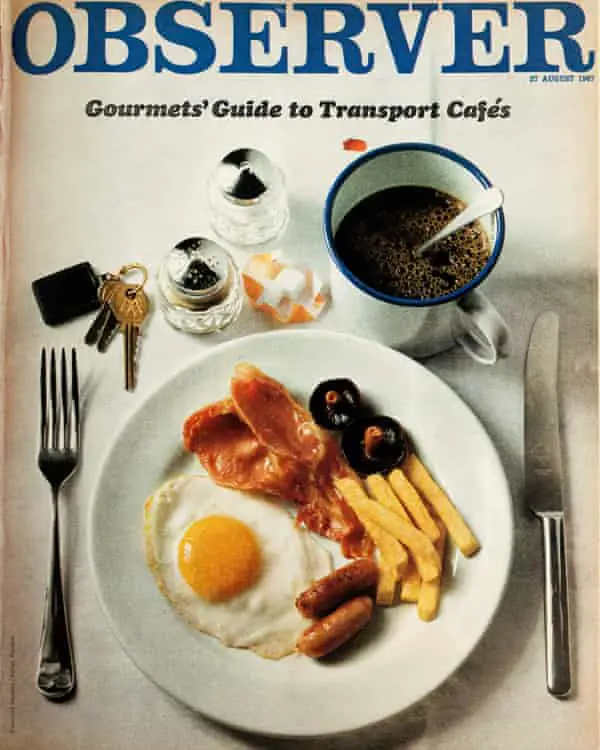The Transport Café – A Celebration
17 May 2021
While some forms of roadside building have gone the way of AA and RAC telephone boxes, it is heartening to come across a surviving transport café. The Ace, near Wembley, which opened in 1938, is possibly the best known. Another name that will be familiar to many readers is Kate’s Cabin on the A1.
There was once an entire network of such establishments across the UK, providing a vital service to the nation’s lorry drivers. At 4am on a wet October day, an all-night diner was one of the most welcome sights imaginable, and in 1935 an anonymous contributor to Commercial Motor wrote:
People who keep to regular hours and whose business does not take them along the roads during the night, do not realize that on the main highways spreading outwards from London and other big centres there is a regular night life lived by men whose occupation is road transport. The customers of our cafe, and many like it up and down the high roads of Britain, receive as much “service” as do the patrons of the smart resorts in the big owns
These were venues designed to cater to the haulier’s needs rather than the commercial traveller or the holiday-maker. When a Guardian journalist visited an A27 café in 1957, “the drivers seemed uncomfortable and resentful of anyone who got out of a motor-car, though there was plenty of room for everybody”. Shades of Hell Drivers, perhaps?

10 years later, a report in The Observer found many cafés still operating as a form of a club; “Private drivers will be turned away or sent to the back of the queue when the rush for dinners with chips is in.” Egon Ronay encountered a similar scenario when he researched his first transport café guide in 1974 - some patrons “looked at me very strangely”. Commercial Motor magazine thought “The only snag about such a book is that it will fall into the hands of motorists who at holiday times may pack out these recommended establishments.”
£sd was one of the main reasons why the average Ford Consul owner opted for a transport café rather than a more expensive ‘roadhouse’. Prices reflected the haulage industry’s budgets and an average lorry driver’s wages. One 1957 vintage menu offered roast pork with vegetables for 2/2d, steak and chips for 3/- and a pudding for sixpence. Tea was an equally reasonable 3 1/2d per cup, and, for the extravagant, there was coffee at 7d.
About 17 years later, the average daily subsistence payment was £3 with a three-course meal between 30p and 50p and “bed and breakfast” at £1.50 per night. Many trunk road diners were now Little Chefs, with menus and décor intended to appeal to Morris Marina TC owners – and where HGVs were not welcome. Motorways had further impacted this once familiar institution – a 1963 report stated that some drivers missed “…the exclusive atmosphere of a transport café.”
However, before we become overly nostalgic, it should be remembered how dire some venues could be, with hygiene standards on a par with Albert Steptoe. One French observer found “eggs on soggy chips”, and “sickly sergeant-major tea served in a chipped or broken cup” while Ronay used such phrases as “neo-Dickensian doss-houses”. Similarly, a 1976 BBC report features drivers explaining why they often preferred to sleep in their cabs. There is also the opportunity to witness some amazing Alvin Stardust hairstyles: https://www.facebook.com/watch/?v=292687194437651
Yet, these establishments were – and are – an essential aspect of Britain’s transport network. Ronay praised how so many gave “honest service and good food – and the prices astound me. I just cannot understand how they manage to keep them so low and the only explanation can be that the owners of the best cafes are devoted to their clientele.”
And in celebration of the ‘pull-in’, here is a 1978 Thames Television report on Jock’s Café on the A4. It is the realm of middle-aged Teddy Boys, drivers in their vests – and home-made rock cakes:
